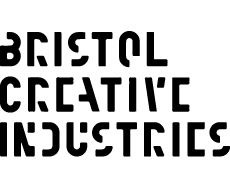Are You Rebranding to Stand Out or Blend in?
As brands like Spotify, Facebook and Burberry have grown (and grown and grown) their logos have lost their expressive letter positioning, playful fonts and colourful palettes. A move towards modern simplification, also sometimes referred to as ‘reductive design’, expressed through a san serif font, generous kerning, and often a monochrome palette is undeniable – especially amongst fashion and tech brands – but what is driving this trend, and should brands beware of blending in?
While this debate isn’t brand new, this particular can of worms was recently reopened by developer Radek Sienkiewicz who posted his theories as to why modern logos were drowning in a “sea of sameness” on his website, which then spawned a viral twitter thread by writer, podcast host, and educator David Perell who had a few theories of his own.
Sienkiewicz credits the enhanced readability of san serif fonts with its rise in popularity – but with 4K screen and retina displays, he asks, will that remain true in the future? And do brands that move towards this kind of aesthetic risk becoming so bland that they are lost on the screens they have rebranded to appease?
“It’s possible that high-resolution screens could lead to serif fonts being more acceptable on screen, but I can’t see this being the sole reason for it,” says Laurie Edwards, Lead Designer here at Soap Creative. “Ultimately each typeface has a distinctive voice and tone, so brands need to deliver their message in a way that speaks to their audience and stays true to who they are, regardless of the platform.”
It is also worth noting that this trend applies most to some of the planet’s biggest, and most established, brands. When the likes of eBay and Airbnb started out their logo reflected their status as young, fast-paced and fun start-ups.
However, now well into their mature business years these same brands want to communicate reliability and trustworthiness and their current logos do that, too. Leave it to the Oatly’s of this world to play with frivolous fonts – perhaps when it reaches the same point in its life cycle, or achieves the same levels of global domination, it will make the same creative choices, too.
Sienkiewicz makes the argument that brands are moving away from logo brand designs and instead considering the brand itself as the concept. The epitome of this is when brands become verbs, like to Google or to Zoom. In this case, Sienkiewicz argues, a custom typeface, rather than a distinctive logo, can trigger recognition on any platform or device. For many smaller brands, like the ones we often work with here at Soap Creative, a custom font may not be a viable option – but it’s an interesting avenue to explore, nonetheless.
Perell’s twitter thread posited two main factors for this homogenisation; software i.e. designers using the same tools unconsciously affecting the creative process, and the internet i.e. hyper-connectivity is “bound to” decrease aesthetic diversity. Edwards agrees. “To some degree the universal access to free online font libraries could contribute to this but it is much more likely that the internet is the main cause,” he explains. “Clients can easily view their competitors online and choose to follow trends so as not to appear too different and play it safe. The same can be said for designers who can search hundreds of logo ideas at the click of a button and be heavily influenced by brands and ideas that already exist.”
Speaking to Bored Panda, Professor Matt Johnson, a consumer psychology specialist from Hult International Business School and Harvard University, highlights the need for brands to differentiate – but only from their direct competitors. So while we may see ‘tech’ companies as looking similar, is Pinterest really competing with AirBnb? Does it matter to eBay if its rebrand bears some uncanny similarities to Spotify? Johnson points out that while there may be a race to be the first company within a sector to achieve this look, and thus be seen as on-trend (or, even better, trend setting) subsequent brands will need to find other ways to differentiate to avoid looking like copycats.
Edwards has some advice for brands looking to do just that: “Choosing a logo to represent your brand begins with understanding your brand identity. It’s important to use a font that reflects your brand’s personality, don’t get stuck in the “serif = traditional, sans serif = modern” mindset. When rebranding, consider the impression you want to make and the values you want to reflect.” His recommendation is to aim for simplicity and legibility, but keep quirky features. “Don’t get rid of what the brand has built over the years. Logos should be simple, but in a memorable way.”
Regardless of the size of your brand or the sector that you’re in, your logo is crucial to communicating who you are and connecting your customers to that idea. So a logo that blends in rather than stands out is counterintuitive. While there is no getting away from the interconnectivity of the world we live in today, here at Soap we believe this should be embraced for inspiration and not used as an excuse for a lack of creativity. Design trends will come and go and being aware of them is important – but brands shouldn’t lose their own personality in pursuit of an ‘on-trend’ identity. We know that logos need to be simple but also stand out and that’s what we strive for everytime we create or update a brand.
If you have a brand that needs its first ever logo, or an updated look, why not talk it through with Laurie or one of our designers here at Soap Creative? Email us or give us a call on 01275 400 777





